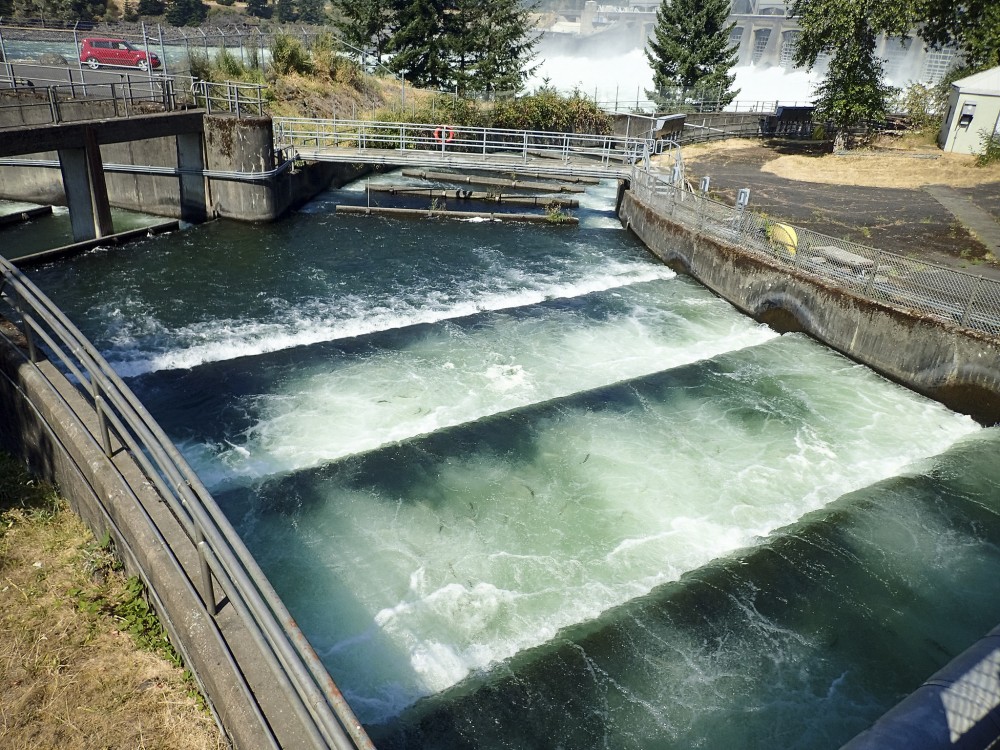Monday November 2, 2015
 As populations and economies grow, so do demands on resources and challenges for sustainability. The need to power such growth in places like Southeast Asia increases the demand for energy production, which is currently fueled predominantly by coal and natural gas in the region (IEA 2013). However, hydropower development is becoming more prevalent throughout Southeast Asia, which raises challenges to sustaining the region’s diverse fisheries. Many technologies are currently being employed to investigate and address this challenge around the world, and FISHBIO will be hosting a session on this topic at the 7th World Fisheries Congress in Busan, South Korea in May 2016. Our session, titled “Technology and inland fisheries: Finding the balance of hydropower and resource sustainability,” will be a forum for scientists around the globe to present research on better methods to manage hydropower while promoting resource sustainability. Abstracts for the symposium are currently being accepted, and are due November 15.
As populations and economies grow, so do demands on resources and challenges for sustainability. The need to power such growth in places like Southeast Asia increases the demand for energy production, which is currently fueled predominantly by coal and natural gas in the region (IEA 2013). However, hydropower development is becoming more prevalent throughout Southeast Asia, which raises challenges to sustaining the region’s diverse fisheries. Many technologies are currently being employed to investigate and address this challenge around the world, and FISHBIO will be hosting a session on this topic at the 7th World Fisheries Congress in Busan, South Korea in May 2016. Our session, titled “Technology and inland fisheries: Finding the balance of hydropower and resource sustainability,” will be a forum for scientists around the globe to present research on better methods to manage hydropower while promoting resource sustainability. Abstracts for the symposium are currently being accepted, and are due November 15.
Projections from the International Energy Agency show that hydropower is estimated to increase to a level representing 15% of new power production by 2035 (IEA 2013). Therefore, it is essential to assess the impacts of hydropower production on the aquatic life and people who depend on riverine resources. While hydropower is a renewable resource technology that is estimated to be 90% efficient (USBR 2005), it also has multiple associated impacts, including changes to the natural processes of rivers (such as sediment and nutrient transport), alterations to habitat distribution and availability, and potential losses of biodiversity and abundances of aquatic species. Mitigation measures exist for some of these impacts; however, some impacts cannot be mitigated for and may require other compensatory measures or simply be acknowledged as a trade-off.
Regulation of hydropower and protection of the environment has existed in the United States for decades, and is currently regulated by several agencies, including the Federal Energy Regulatory Commission (FERC), previously known as the Federal Power Commission that was established in 1920. This long history has produced many studies investigating the effects of hydropower on the environment, including the impacts to fishes. Researchers have and continue to develop various standardized methods and technologies to track how fish respond to hydropower operations. These technologies have included PIT tags, acoustic tags, sonar cameras, and infrared cameras. A wealth of knowledge has come from these studies which can inform fisheries management in developing countries where hydropower is already in place, or is planned for the near future. In this manner, we may be able to promote responsible fisheries management in a hydropower world.
Given the complexities of politics, management, and site specificity, an alternative to hydropower may not be feasible to meet certain energy demands. While hydropower is an efficient technology, its potentially large footprint and ability to adversely impact rivers and aquatic life require responsible monitoring and management. This challenge has led to approaches such as more effective operation and design of turbines to minimize casualties of fish passing downstream, as well as programs to help minimize impacts of hydropower projects, such as the Nature Conservancy’s Hydropower by Design program. If you are interested in presenting about how technology can be used to help guide hydropower design and management to promote sustainable inland fisheries, please contact us at info@fishbio.com or 1-530-892-9686. Abstracts for the 7th World Fisheries Congress can be submitted online now through November 15, 2015.
This post featured in our weekly e-newsletter, the Fish Report. You can subscribe to the Fish Report here.
